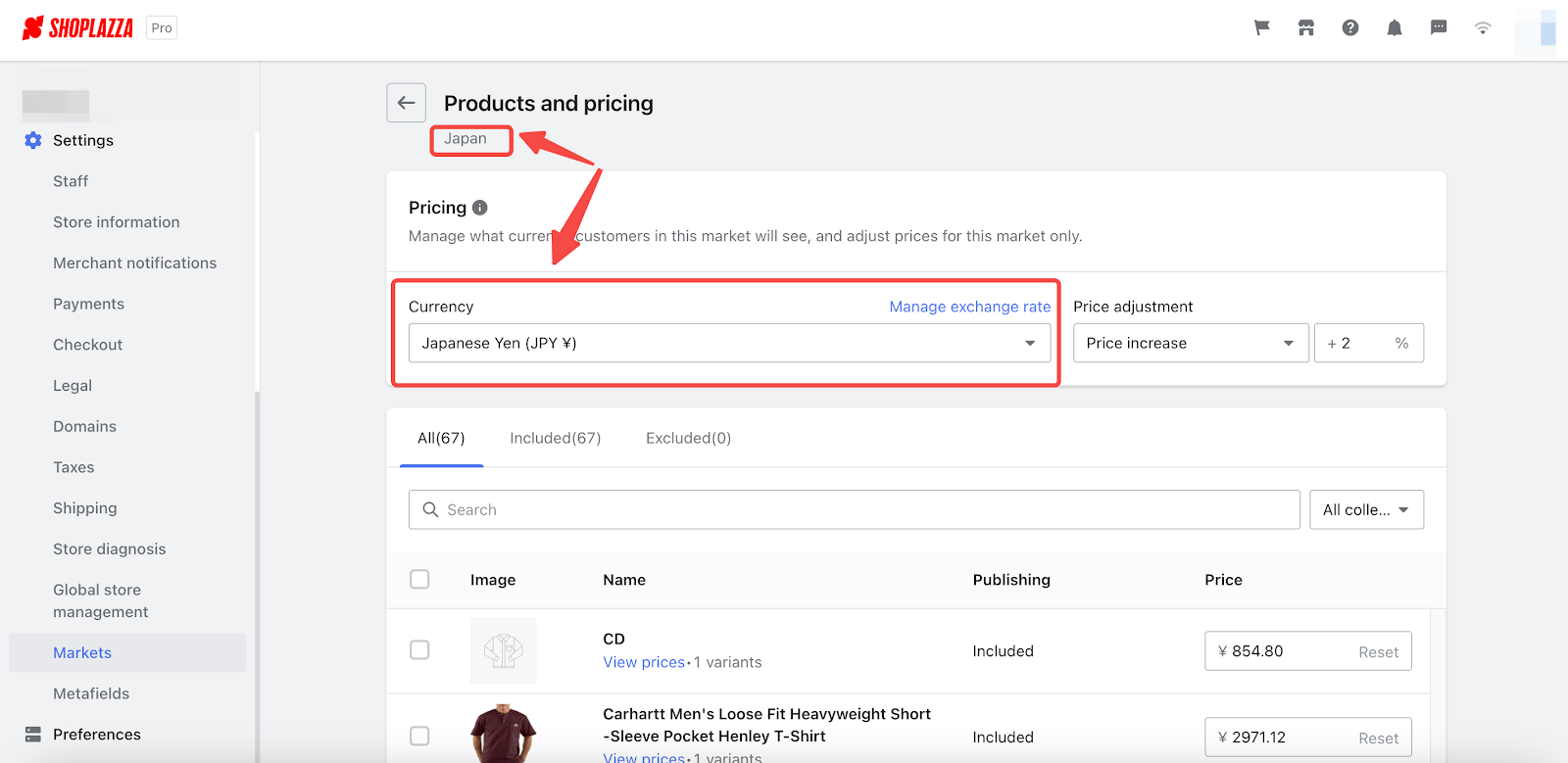When you're running a store that caters to customers in different countries with various currencies, it's important to display the prices in their respective local currencies.
This article is designed to help you when you create a new market, guiding you on how to set up your customers in that market to see and pay for products in their local currency by default. By following these simple steps, you can increase customer intimacy and trust, while also enhancing your brand perception. This will make customers feel that your brand is professional and international, aligning with their expectations and needs.
Setting the local currency for a single-country market
When you create a new market for a specific country or region, Markets will automatically use the currency of that location as the base currency for that market. The image below illustrates JPY currency set for a Japanese market.

Note
If there is no currency support for a particular country or region, Markets will use your store's primary currency.
Setting the local currency for multi-country markets
When you create a multi-country market, the feature to show prices to customers in their local currency is enabled by default. However, if you happen to disable this feature and want to re-enable it, follow these steps:
1. Navigate to your Shoplazza Admin > Settings > Markets. Find the market you want to update and click on Manage.

2. Under the Products and pricing section, click on Manage.

3. In the Pricing section, ensure that the box labeled Show customers prices in their local currency is checked. If it isn't, simply check the box to enable the feature. If you want to disable the local currency display, uncheck the box. Disabling it will cause all customers in that market to see prices in the market's base currency. Don't forget to click Save to save your changes.

Note
This option only appears when multiple countries / regions are selected for that market.
In summary, it's important to set the local currency for your market so that customers can see prices in their own currency. By following the steps provided, you can easily enable or disable the option to display prices in the customer's local currency. This improves the customer experience, builds trust, and aligns with their expectations. Don't forget to save your changes after making any adjustments.



Comments
Please sign in to leave a comment.